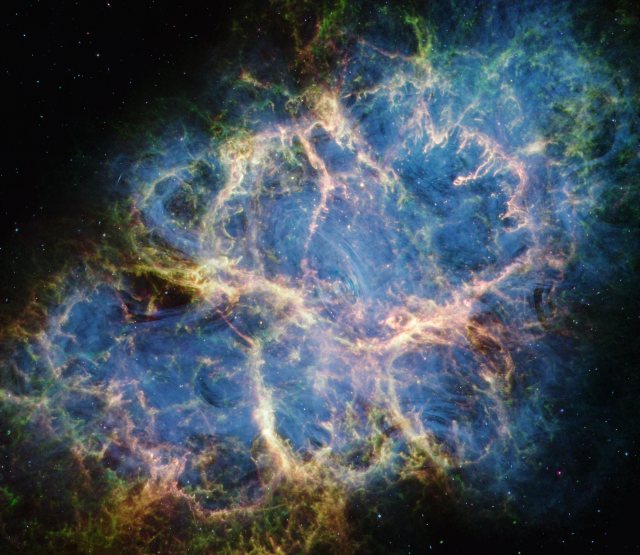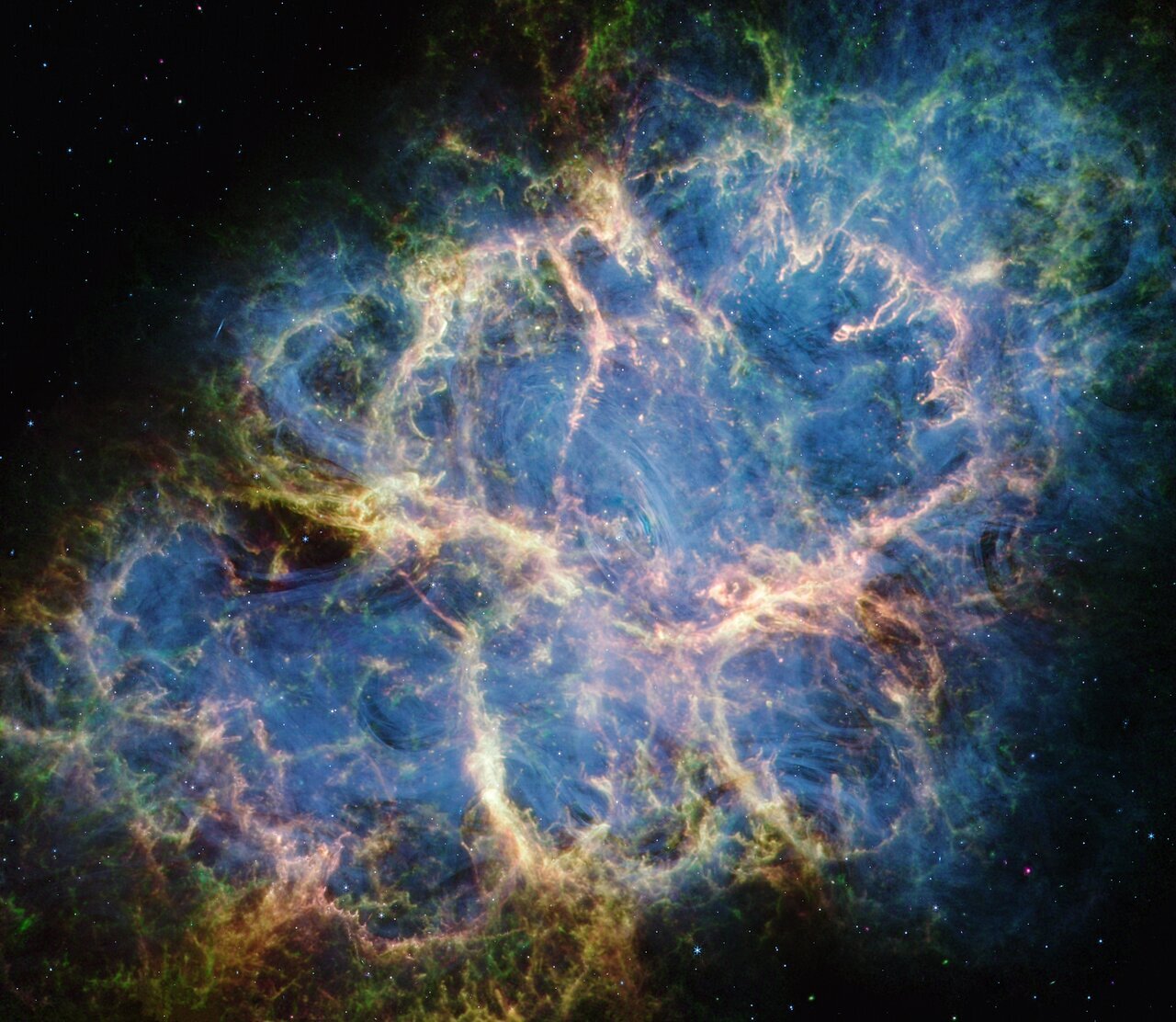
The Crab Nebula, a supernova remnant located approximately 6,500 light-years away in the constellation Taurus, has long puzzled astronomers due to its atypical composition and low explosion energy. Previously believed to be the result of an electron-capture supernova – a rare type of explosion arising from a star with a less-evolved core made of oxygen, neon, and magnesium – new data from NASA's James Webb Space Telescope (JWST) has revised our understanding.
Using JWST's Mid-Infrared Instrument (MIRI) and Near-Infrared Camera (NIRCam), scientists have gathered detailed information about the Crab Nebula, including its chemical composition and structure. This data has shed light on the nature of the supernova explosion that created this intriguing celestial object.
The Crab Nebula is now known to be a core-collapse supernova, which occurs when a massive star collapses in on itself at the end of its life. The resulting explosion is driven by the energy released from the collapse and can outshine entire galaxies for a brief period of time.
The Crab Nebula's pulsar, a rapidly spinning and highly magnetized neutron star, powers an outflowing wind that drives the expansion of the nebula. This wind interacts with surrounding gas and dust to create complex structures within the remnant.
One intriguing finding from JWST data is the presence of nickel and iron emission lines in two areas within the Crab Nebula's inner filaments. By measuring these lines, scientists have determined the nickel to iron (Ni/Fe) abundance ratio, which provides insight into the supernova explosion's composition.
The revised Ni/Fe abundance ratio values are consistent with both electron-capture and core-collapse supernovae. This suggests that a low-mass star with an iron core could have been the progenitor of the Crab Nebula, further complicating our understanding of this fascinating celestial object.
The detailed data gathered by JWST has also allowed scientists to create a well-rounded picture of the dust distribution within the Crab Nebula. By mapping warm dust emission with Webb and combining it with Herschel Space Observatory's data on cooler dust grains, researchers have gained new insights into the complex interplay between gas and dust in this supernova remnant.
As we continue to analyze JWST data from the Crab Nebula, we will undoubtedly uncover more secrets about this intriguing celestial object and deepen our understanding of stellar evolution.



